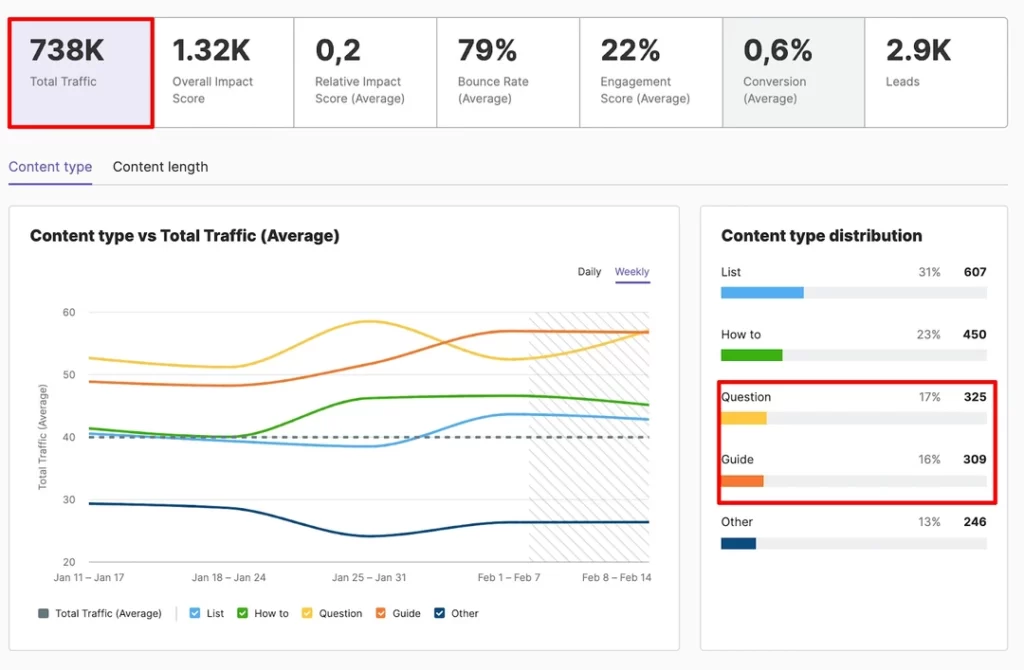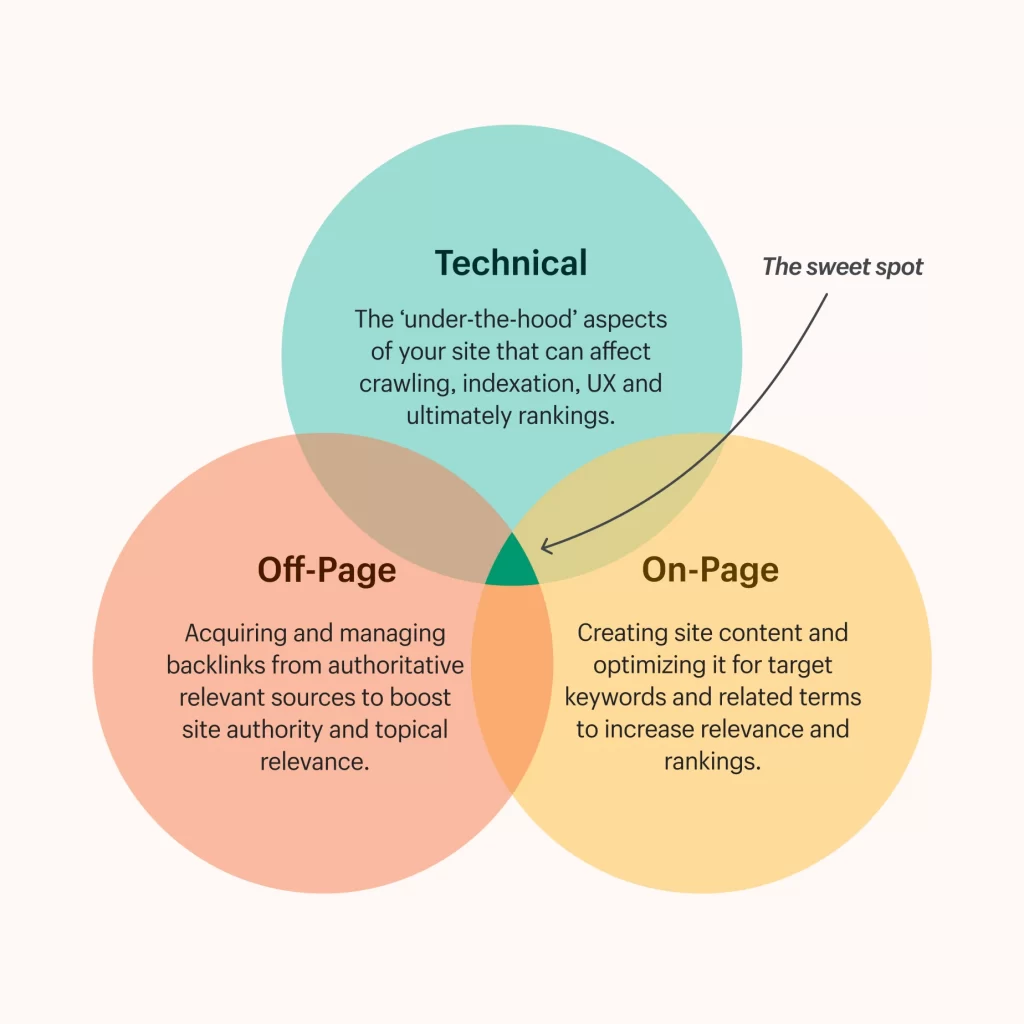How to Optimise Underperforming Content and Skyrocket Your Results
Imagine this scenario. You've spent weeks perfecting a piece of content. You've researched, drafted, revised, and edited. You've carefully incorporated SEO best practices, crafted compelling visuals, and included a powerful call to action. It's your best work yet. You hit publish…and then, nothing. The engagement is low, the traffic is non-existent, and conversions are nowhere to be seen. In the marketing world, we'd label this as underperforming content.
It's a frustrating experience, but fear not! In this comprehensive guide, we will delve into the depths of content optimisation to help you transform underperforming content into powerful assets that drive traffic, conversions, and success.
So, buckle up and get ready to unlock the full potential of your content. By following the strategies and tactics outlined in this article, you'll be well-equipped to optimise your underperforming content, boost its visibility, and reap the rewards of your hard work.
Table of Contents
What is ‘Underperforming' Content?

So, what exactly is underperforming content? Simply put, underperforming content is content that fails to meet your set goals or expectations. These goals could revolve around metrics like traffic, engagement, conversions, or SEO rankings.
But let's dig a little deeper.
Content underperformance isn't always about not hitting the bullseye; sometimes, it's about missing the target entirely. Here's what I mean: let's say you run an online store selling eco-friendly products. You publish a blog post about the benefits of switching to reusable shopping bags. You get a ton of traffic, but nobody's buying your bags. Is the content underperforming? Well, it depends on how you look at it. It's performing well in organic traffic but could perform better if it's not leading to conversions.
Now, the big question is, why does content underperform? There can be a myriad of reasons for this. The content might not resonate with your audience, it might not be aligned with your brand, the timing could be off, or it could be a lack of promotion. The quality of the content could be another factor. It may not be informative or entertaining enough or too salesy.
Understanding why your content is underperforming is vital in rectifying the situation. It's all about looking at the data and figuring out what's not clicking.
For instance, if your content is getting traffic but not conversions, your call-to-action isn't strong enough, or your content isn't persuasively conveying the benefits of your product. Or, if your content needs to get traffic, it could be an SEO issue. You may not use the right keywords, or your content isn't optimised for search engines.
Once you identify the issue, you can start implementing solutions. If your call to action is weak, you can strengthen it. If your content isn't resonating with your audience, you can do more audience research and create content that speaks to their needs and interests. If it's an SEO issue, you can optimise your content for relevant keywords and improve its visibility on search engines.
It's also worth noting that sometimes, content underperforms simply because it needs more time to gain traction. In such cases, patience is vital. However, if your content consistently underperforms over time, it's a sign that something needs to change.
Ultimately, the goal is to create content that resonates with your audience and drives your desired outcomes, whether traffic, engagement, conversions or all the above. When your content underperforms, don't see it as a failure. Instead, view it as an opportunity to learn, adapt, and improve. After all, in the dynamic world of content marketing, there's always room for growth.
Section 1: Analysing Content Performance

Before we delve into optimisation techniques, it's crucial to understand what might be causing your content to underperform. We don't want to rush into solutions without fully understanding the issues. So, in this section, we'll take a closer look at various tools and metrics that can offer valuable insights into how your content is performing.
These tools and metrics are our trusty detectives, helping us uncover the secrets behind lacklustre results. By using them, we can better understand what's going on and make informed decisions on how to improve.
Imagine having a magnifying glass that lets you examine your content from all angles. That's what these tools provide. They help you see beyond the surface and identify the underlying factors hindering your content's success.
And the best part is that many tools and metrics are available. Each offers a unique perspective, enabling you to comprehensively picture your content's performance. Whether tracking user engagement, analysing website traffic, or studying social media metrics, these resources can be like gold mines of information.
By exploring these tools and metrics, you can uncover valuable insights that might have remained hidden. They can reveal patterns, trends, and correlations that shed light on what's working and what's not. With this knowledge, you'll be well-equipped to tackle the underperformance head-on.
1.1 Utilising Web Analytics Tools
Web analytics tools like Google Analytics offer a treasure trove of data to evaluate content performance. They provide essential metrics such as page views, bounce rates, average time on page, and conversion rates. By analysing these metrics, you can identify the weak points in your content and devise an optimisation strategy.
1.2 Conducting Content Audits
Performing a comprehensive content audit allows you to evaluate your existing content's quality, relevance, and effectiveness. By examining factors like keyword targeting, readability, and engagement levels, you can pinpoint areas that require improvement.
1.3 User Feedback and Engagement Metrics
Engaging directly with your audience is a powerful way to understand their needs and preferences. User feedback, comments, social media interactions, and engagement metrics provide valuable insights into the strengths and weaknesses of your content. Leverage this feedback to make data-driven decisions and tailor your content to serve your audience better.
Section 2: Identifying Underperforming Content
All right, now that we've laid down a solid foundation for analysing the performance of your content, it's time to roll up our sleeves and dig deeper into identifying those underperforming pieces that could use some optimisation. In this section, we'll explore some practical methods to help us pinpoint the content that isn't quite meeting our expectations.
The first step is to analyse the data. Look at the metrics and key performance indicators (KPIs) that matter to you. These could include website traffic, click-through rates, conversion rates, social media engagement, or other relevant metrics specific to your goals. By diving into the data, you can gain valuable insights into the performance of your content.
Start by comparing the performance of different content pieces. Look for patterns or trends that stand out. Are there specific topics or formats that consistently perform better than others? Are there particular channels or platforms where your content is thriving or struggling? This comparative analysis can provide valuable clues about what's working and needs improvement.
Another helpful method is to conduct surveys or gather feedback directly from your audience. Ask them about their preferences, what they find valuable, and what they'd like to see more of. You can use online surveys, social media polls, or even hold focus groups to gather qualitative insights. This feedback can shed light on areas where your content may be falling short or where you can capitalise on untapped potential.
Additionally, take into account the power of good old-fashioned observation. Keep a close eye on your competitors and industry influencers. What content are they producing that seems to resonate with their audience? Are there any emerging trends or topics that you could leverage? While you should always strive for originality, observing what's working for others can spark ideas and help you adapt your content strategy.
Remember, content optimisation is an iterative process. Once you've identified underperforming pieces, it's time to roll up your sleeves and make improvements. It could involve rewriting the copy, enhancing the visuals, reevaluating your targeting or distribution strategies, or repurposing the content for different platforms. Be open to experimentation, and don't be afraid to try new approaches.
Using a combination of data analysis, audience feedback, and industry observation, you can pinpoint the weak spots in your content strategy and turn them into opportunities for growth. Stay flexible, keep learning, and continuously refine your content based on what resonates with your audience. Remember, content optimisation is a journey; with each step, you're getting closer to creating content that truly shines.
2.1 Performance Metrics Comparison
Compare the performance metrics of your content pieces to identify those falling behind. Look for pages with low traffic, high bounce rates, or low engagement levels. This comparison will help you prioritise the content that requires immediate attention.
2.2 Keyword Ranking Analysis
Review your target keywords and assess the ranking positions of your content. If your pages do not rank well for important keywords, it indicates underperformance. Focus on these pages to optimise keyword targeting and boost their visibility in search engine results.
2.3 Content Gap Analysis
Perform a content gap analysis by identifying topics and keywords related to your niche that your competitors are ranking for but you are not. This analysis will highlight opportunities to create new content or enhance existing pieces to bridge the gap and capture valuable organic traffic.
Section 3: Optimising Content for Search Engines

Oh, search engine optimisation (SEO) – the secret ingredient that can make your content shine and reach its full potential! If you've ever wondered how to boost the visibility and reach of your underperforming content, then you're in for a treat. In this section, we will dive deep into some powerful SEO techniques that can give your content the revitalisation it deserves.
First things first, you need to understand the importance of keywords. Keywords are the words or phrases people use to search for information online. By strategically incorporating relevant keywords into your content, search engines like Google can better understand what your content is all about. This, in turn, increases the chances of your content showing up in search results when someone searches for those keywords.
But hold on; it's not just about stuffing your content with keywords. Gone are the days of keyword stuffing, which is frowned upon by search engines and off-putting to readers. Instead, you'll want to focus on a more natural and organic approach. Integrate keywords seamlessly into your content, ensuring they flow naturally and enhancing overall readability and value.
Next up, it's time to optimise your meta tags. Meta tags are snippets of information that concisely summarise your content to search engines. The two most important meta tags are the meta title and meta description. Your meta title should be attention-grabbing and include relevant keywords, while your meta description should provide a compelling summary that entices users to click and read more.
Now, let's talk about the power of backlinks. Backlinks are like votes of confidence from other websites. When reputable websites link back to your content, it signals to search engines that it is valuable and trustworthy. So, how can you get more backlinks? Creating high-quality content that others naturally want to reference is a great start. Additionally, you can engage in outreach activities, such as reaching out to influencers or industry experts to share your content. The more quality backlinks you have, the higher your content's visibility can soar.
Speaking of visibility, have you considered optimising your content for featured snippets? Featured snippets are those nifty little boxes that appear at the top of search results, providing users with quick and concise answers to their queries. To increase your chances of securing a featured snippet, structure your content in a way that directly answers common questions related to your topic. Use headings, bullet points, and concise paragraphs to make it easy for search engines to extract and showcase your content as a featured snippet.
Last but not least, remember the importance of user experience. Search engines prioritise websites that offer a smooth and enjoyable experience for users. Ensure your content is easily accessible, loads quickly, and is mobile-friendly. Additionally, consider optimising your images with descriptive alt tags and providing straightforward navigation throughout your website.
3.1 Keyword Research and Optimisation
Conduct comprehensive keyword research to identify relevant, high-intent keywords that align with your content. Optimise your underperforming content by strategically incorporating these keywords in the title, headings, meta tags, and throughout the body. Additionally, ensure proper keyword density and maintain a natural flow of content.
3.2 Enhancing On-Page Elements
To optimise your content for search engines, pay close attention to the following on-page elements:
3.2.1 Title Tags and Meta Descriptions
Craft compelling and keyword-rich title tags that accurately describe the content of your page. Incorporate the primary keyword naturally while ensuring it entices searchers to click through. Similarly, write engaging meta descriptions that concisely summarise the page's content and encourage users to visit your website.
3.2.2 Headings and Subheadings
Structure your content using relevant headings (H1, H2, H3, etc.) to improve readability and signal the topic hierarchy to search engines. Incorporate keywords into your headings to optimise for both users and search engines. Break up your content into logical sections with descriptive subheadings, making it easier for readers to skim and find the information they seek.
3.2.3 URL Structure and Permalinks
Ensure your URLs are concise, descriptive, and include relevant keywords. A clean URL structure not only enhances user experience but also provides search engines with valuable context about the content of your page. Consider using permalinks incorporating the primary keyword or a variation to boost SEO.
3.2.4 Image Optimisation
Images can significantly enhance the appeal of your content, but they also present an opportunity for optimisation. Compress images to reduce page load times, include descriptive alt text with relevant keywords, and use descriptive filenames. Optimised images improve user experience, boost search engine rankings, and increase the likelihood of your content being discovered through image searches.
3.3 Improving Content Quality and Relevance

Optimising content for search engines is crucial, but ensuring its quality and relevance to the target audience is equally important. In this section, we'll explore methods to enhance these aspects.
3.3.1 Content-Length and Depth
Long-form, in-depth content tends to perform better in search engine rankings. Aim to create comprehensive pieces covering the topic, providing value and answering user queries. Research shows that longer content tends to attract more backlinks, social shares, and engagement, all contributing to improved visibility.
3.3.2 Updating and Refreshing Content
Don't let your content become outdated and stale. Regularly update and refresh your underperforming pieces with the latest information, statistics, and insights. This improves the relevance and accuracy of your content and signals to search engines that you're committed to providing up-to-date information.
3.3.3 Improving Readability and User Experience
User experience plays a pivotal role in content performance. Enhance readability by using short paragraphs, bullet points, and subheadings. Break up large chunks of text and ensure the content flows naturally. Incorporate multimedia elements like videos, infographics, or interactive features to engage users and reduce bounce rates.
3.3.4 Internal and External Linking
Internal linking helps search engines understand your website's structure and hierarchy while guiding users to relevant content. Incorporate internal contextual links within your underperforming content to improve navigation and increase time spent on your website. Additionally, include external links to authoritative sources that provide further information and add credibility to your content.
3.4 Harnessing the Power of User Engagement

Engaging your audience is crucial for content optimisation. Search engines interpret this as a positive quality signal when users spend more time on your pages, interact with your content, and share it with others. Let's explore some strategies to boost user engagement.
3.4.1 Encourage Comments and Feedback
Actively encourage readers to leave comments, share their opinions, and ask questions. Respond promptly to comments and engage in meaningful conversations to foster community and promote further engagement.
3.4.2 Social Sharing and Amplification
Integrate social sharing buttons into your content to make it easy for readers to share it across their social networks. Engage with your audience on social media platforms, promoting your underperforming content and encouraging discussion and sharing. Leverage social media advertising to reach a wider audience and increase your content's visibility.
3.4.3 Call-to-Action Optimisation
Include clear and compelling calls-to-action (CTAs) within your content to guide users towards desired actions. Whether subscribing to a newsletter, downloading a resource, or purchasing, strategically place CTAs throughout your underperforming content to drive conversions and increase user engagement.
3.5 Mobile Optimisation
With mobile usage on the rise, optimising your underperforming content for mobile devices is crucial. Ensure your website is mobile-friendly, loads quickly, and provides a seamless user experience across different screen sizes. Mobile optimisation is vital for user satisfaction and critical to search engine rankings.
Section 4: Promoting and Repurposing Content

Content optimisation goes beyond just tweaking on-page elements and implementing SEO strategies. There's a whole world of potential for your underperforming content when you focus on promoting and repurposing it. It's like giving your content a fresh breath of life and opening up exciting opportunities to expand its reach.
Promotion is the key here. Don't be shy about sharing your content across various platforms and channels. Utilise social media platforms like Twitter, Facebook, and LinkedIn to promote your content to your followers and engage with a broader audience. Craft compelling captions and catchy headlines that entice people to click and explore your content further.
Another effective way to revitalise your underperforming content is by repurposing it. Repurposing transforms your content into different formats or mediums to reach a broader audience. For example, if you have a lengthy blog post, you can repurpose it into a visually appealing infographic, a podcast episode, or even a series of engaging social media posts. By doing so, you make your content more accessible and cater to different preferences.
Moreover, consider collaborating with influencers or industry experts to boost your content. Influencers have their own dedicated following, and their endorsement or promotion of your content can bring it to the attention of a whole new audience. Partnering with experts in your field can also add credibility and authority to your content, making it more enticing for others to engage with.
Additionally, remember the power of revisiting and optimising your existing content. Take a fresh look at your underperforming pieces and analyse what might be missing or not resonating with your target audience. Can you incorporate new trends, statistics, or insights to make the content more relevant and valuable? Perhaps a new perspective or an updated angle can breathe new life into it. Optimise your content with relevant keywords, meta tags, and internal links to enhance its visibility in search engine results.
4.1 Content Promotion Tactics
4.1.1 Email Marketing
Leverage your email list to promote your underperforming content. Craft engaging emails that highlight the value and relevance of your content and include a clear CTA to encourage clicks and engagement.
4.1.2 Influencer Outreach
Identify influencers or industry experts who align with your content and contact them for collaboration opportunities. Whether it's guest blogging, co-creating content, or seeking endorsements, influencer partnerships can amplify the reach and visibility of your underperforming content.
4.1.3 Social Media Advertising
Harness the power of social media advertising platforms like Facebook Ads, LinkedIn Ads, or Twitter Ads to promote your content to a targeted audience. Utilise these platforms' advanced targeting options to ensure your content reaches the right people likely to engage with it.
4.2 Content Repurposing Strategies

4.2.1 Republishing on Different Platforms
Consider republishing your underperforming content on popular platforms like Medium, LinkedIn Pulse, or industry-specific forums and communities. Tailor the content to fit the platform's guidelines and audience preferences, and include links back to your website to drive traffic and visibility.
4.2.2 Transforming into Different Formats
Repurpose your underperforming content into different formats to cater to different learning styles and preferences. Convert a blog post into a video, create an infographic, or turn a series of articles into an ebook. This allows you to reach new audiences and provides opportunities for increased engagement and sharing.
4.2.3 Collaborative Content Projects
Collaborate with industry peers, influencers, or experts to create collaborative content projects. This could be in the form of expert roundups, joint webinars, or podcast interviews. By leveraging the networks and expertise of others, you can amplify the visibility and reach of your underperforming content.
Conclusion
Optimising underperforming content is a strategic and iterative process. By analysing content performance, identifying areas of improvement, and implementing targeted optimisation techniques, you can revitalise your content and unlock its full potential. Remember, content optimisation is not a one-time task but an ongoing effort to adapt to evolving user needs and search engine algorithms.
As you embark on your content optimisation journey, remember that patience and persistence are key. It may take time to see the full impact of your efforts, but the results will be worth it. Monitor your content's performance regularly, make data-driven adjustments, and adapt your strategies.
Remember, content optimisation is not just about appeasing search engines. It's about creating valuable, relevant, engaging content that resonates with your target audience. By providing exceptional user experiences, addressing their pain points, and offering solutions, you'll build trust, establish authority, and drive more traffic, conversions, and success.
So, don't let your underperforming content go to waste. Take action today, armed with the knowledge and strategies shared in this guide. Unlock the true potential of your content, rise above the competition, and achieve the results you've been dreaming of.
Get ready to optimise, captivate, and conquer the world of content marketing. The power is in your hands. Start optimising your underperforming content now, and watch your success soar to new heights!
